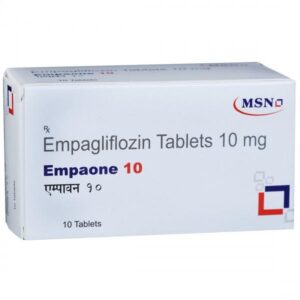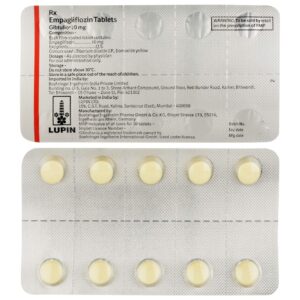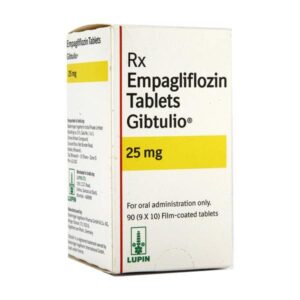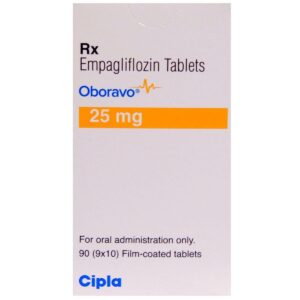EMPAGLIFOZIN
EMPAGLIFOZIN: Empaglifozin is an oral medication used in the treatment of type 2 diabetes mellitus. It belongs to a class of drugs called sodium-glucose co-transporter-2 (SGLT2) inhibitors.
The primary mechanism of action of empaglifozin is the inhibition of the SGLT2 transporter in the kidneys. This transporter is responsible for reabsorbing glucose from the urine back into the bloodstream. By inhibiting this transporter, empaglifozin increases urinary glucose excretion, thereby reducing blood glucose levels.
The recommended dose of empaglifozin for most adults is 10 mg once daily. It can be taken with or without food. However, the dose may need to be adjusted based on individual patient factors such as renal function.
Common side effects of empaglifozin may include urinary tract infections, genital yeast infections, increased urination, and increased thirst. These side effects are mainly due to the increased glucose excretion in the urine. Other possible side effects include hypoglycemia (when used in combination with other antidiabetic medications), hypotension, increased risk of fractures, ketoacidosis (in rare cases), and dehydration.
It is important to note that empaglifozin is not recommended for use in patients with type 1 diabetes or diabetic ketoacidosis. It is also contraindicated in individuals with severe renal impairment or end-stage renal disease.
Before starting empaglifozin, it is crucial for healthcare providers to assess the patient’s renal function and monitor it regularly during treatment. Additionally, patients should be advised to stay hydrated and be cautious about potential signs of dehydration.
Overall, empaglifozin is a medication that helps control blood glucose levels in individuals with type 2 diabetes by increasing urinary glucose excretion. However, it is essential to discuss the use, benefits, and potential side effects with a healthcare professional before initiating treatment.





